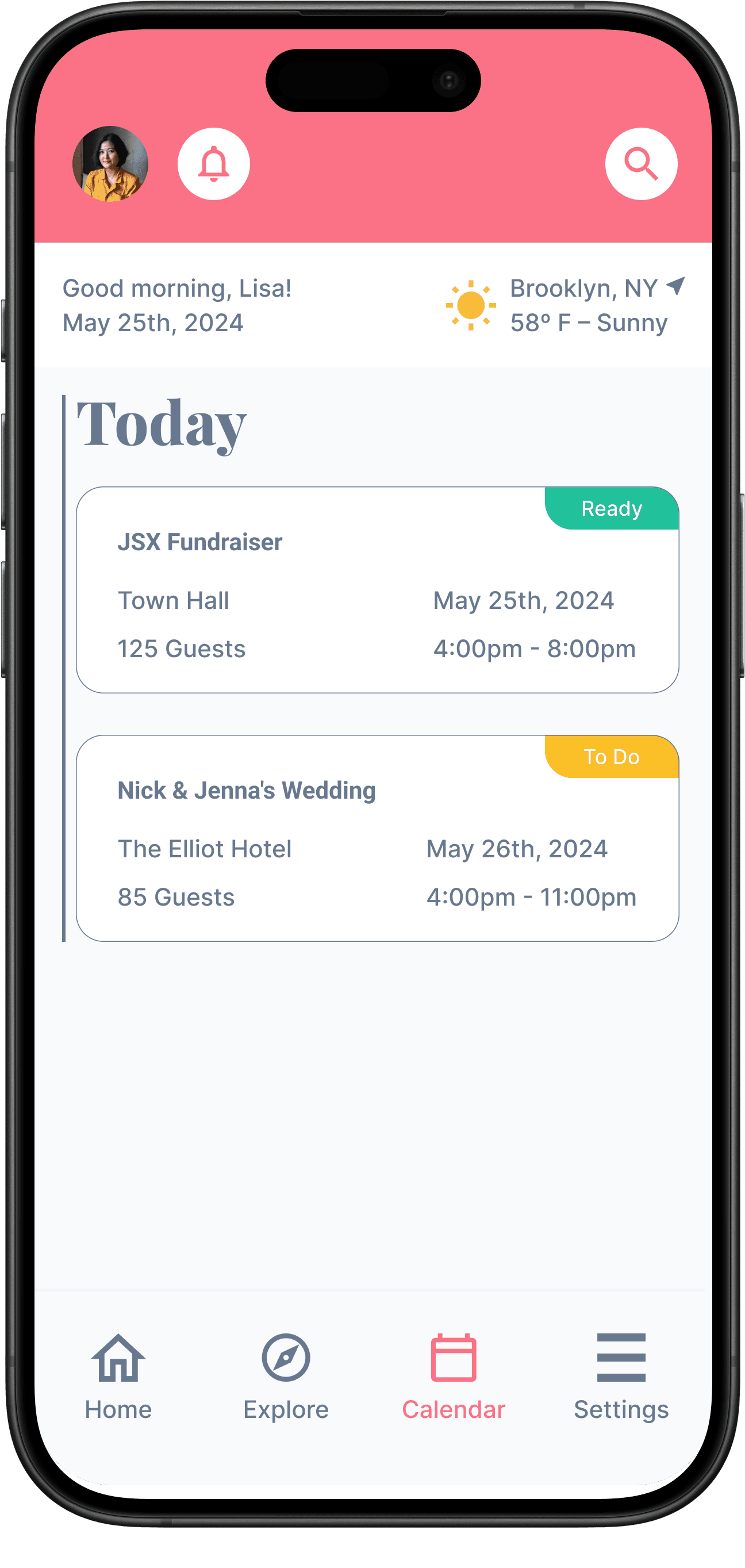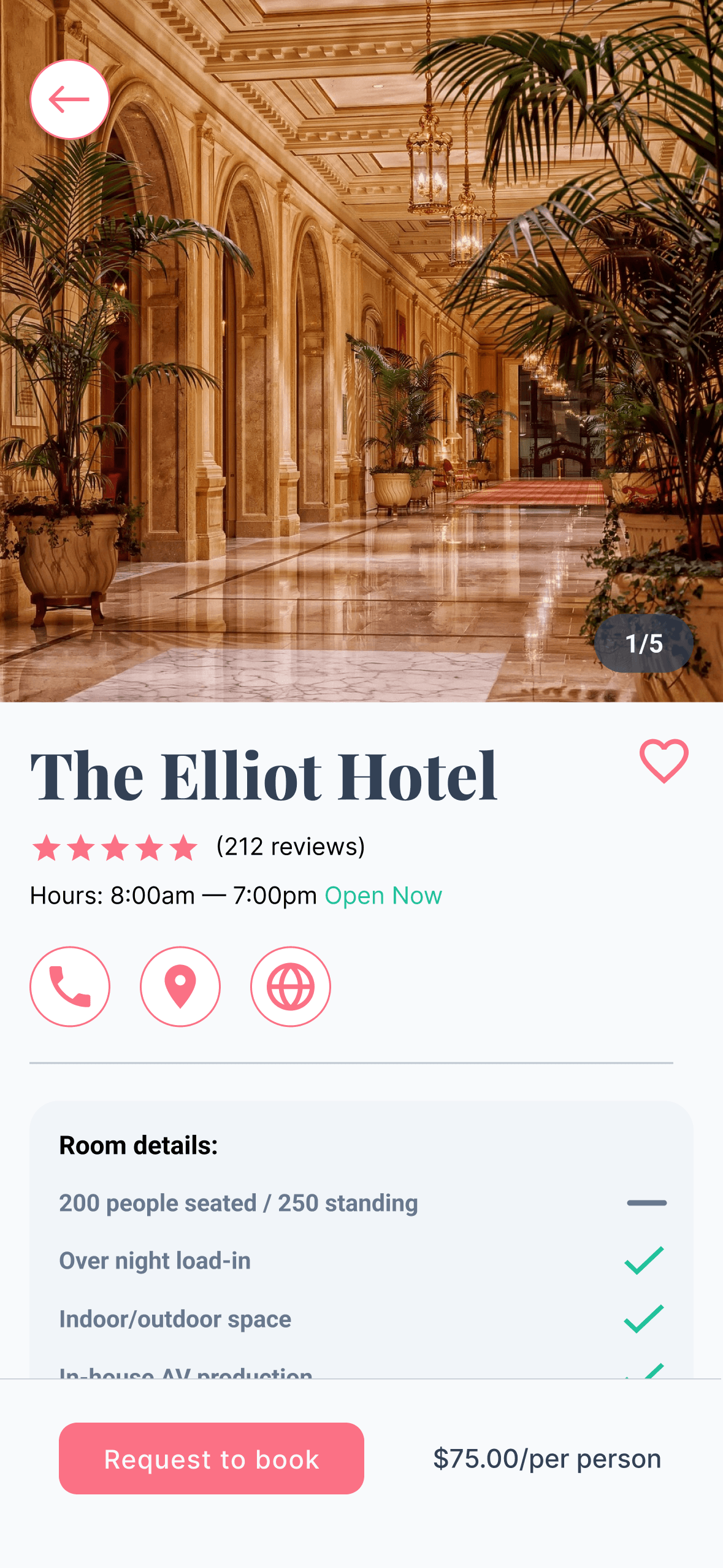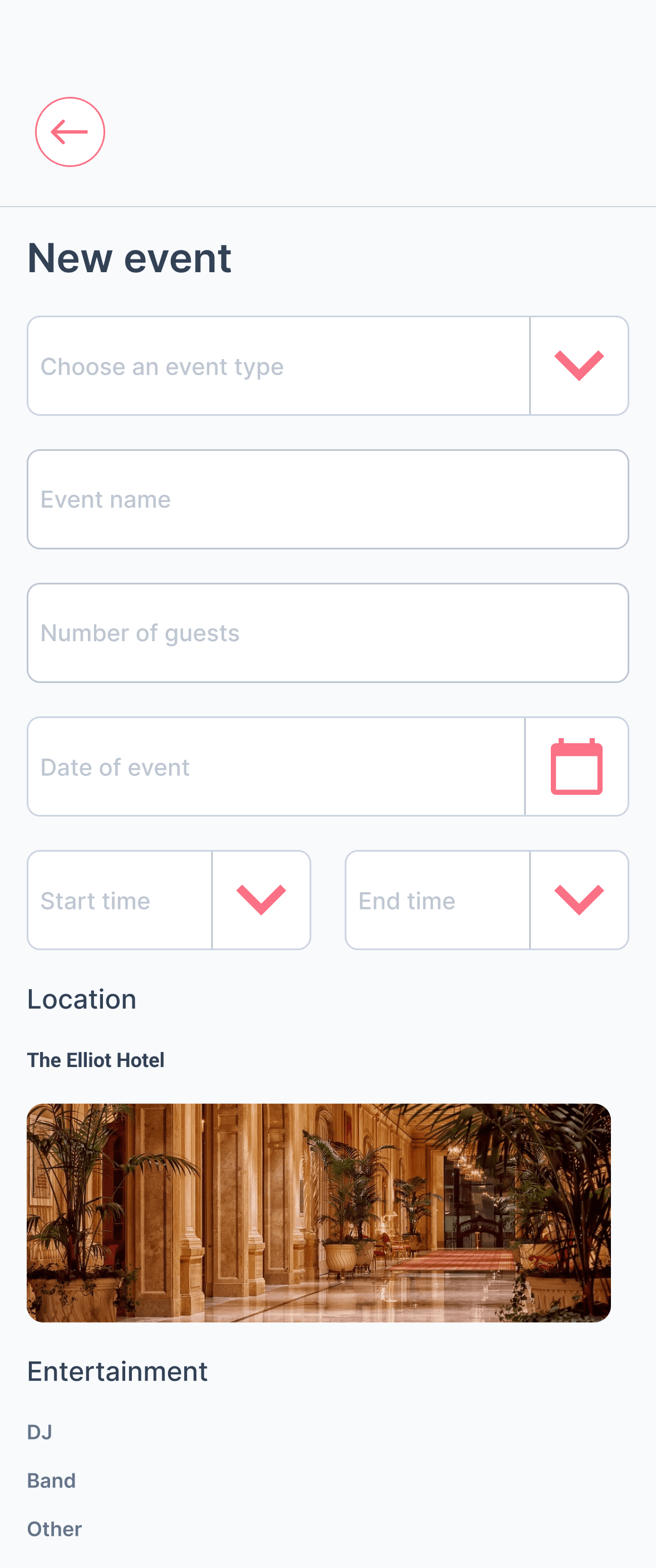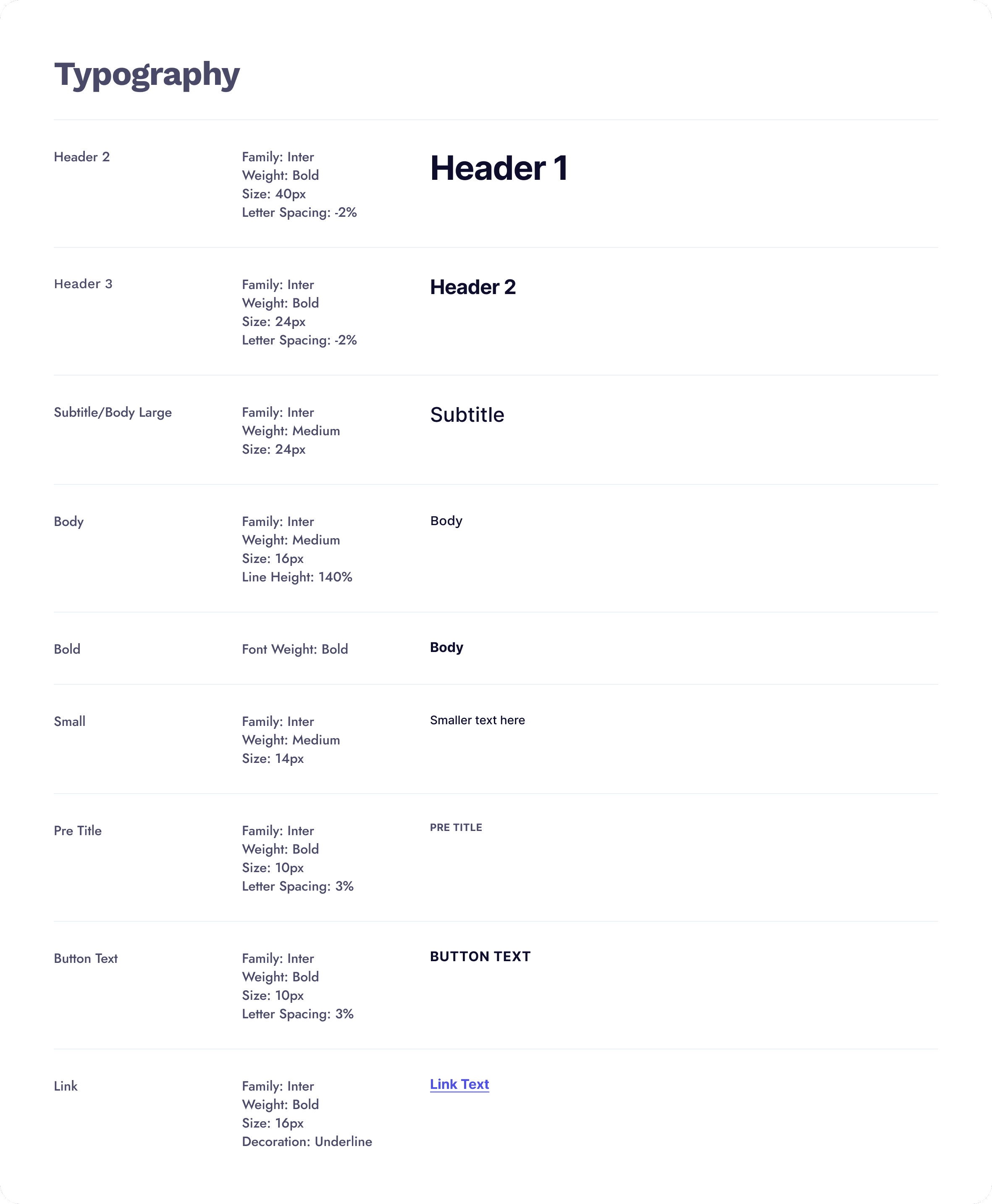


Plannit is an all-in-one event management platform designed to organize tasks and connect you with a vast network of professional vendors to create the perfect event.
My role
As the Lead UX Designer and Researcher, I conducted user interviews, synthesis sessions, and brainstorming sessions to refine ideas.
I took charge of all the research and design activities, creating wireframes, high-fidelity designs, and interactive prototypes to gather user feedback and test ideas.
Team 👨💻
Danny Graugnard, Alison Chu (Developer), Amber Medina (Developer)
Timeline ⏰
September 2023 – present
Skills 🕺
Figma, Procreate, React Native, Wireframes & prototyping, Personas
Designs
Sign-up







Create a new event







Problem
Planning an event and finding catering, photography, or other services can be stressful and overwhelming. Planners struggle to with organizing tasks, while also researching vendors and experts to collaborate and execute successful events.
As a result...
1. Planners often feel overwhelmed by the process due to juggling different work flows and apps to secure the venue, catering, staff, and guest management.
2. Freelancers who provide services for private events lack online presence and a direct way to work with their clients.
How can we streamline the planning process and connect planners with vendors under one platform?
Solution
We designed Plannit, a mobile platform that allows event planners to stay up-to-date on upcoming events, keep track of contacts, such as clients, vendors, and venues, and manage tasks for each event.
Ready for launch.
The Dashboard shows you all of your events for the day, and will let you know if you have any tasks due before the event.


Explore a vast marketplace of Spaces.
Use Plannit to explore a wide network of Spaces ready to host your event. Need an outdoor space? Want to bring your own catering? We'll filter venues to match your exact needs.
Prototype
Research
Competitive Analysis
To better understand the landscape of event planning apps, I conducted a competitive analysis into other Event apps. This process involved identifying and evaluating existing solutions to find strengths and weaknesses that could inform my own app development. Here are some similar apps and a breakdown of their features:
Tripleseat
Event sales management software.
Pros:
Built-in analytics tools to track total revenue of even sales.
Automatic lead response.
Mobile app available to manage events.
Cons:
Geared towards hotels and conference spaces.
UI feels corporate, as if designed for large enterprises only.
No entry-level plans for freelancers and small businesses.
Eventbrite
Users can sign-up and search for public events.
Pros:
Anyone can sign up and create events.
Allows users to charge and sell tickets through the app.
Different tiers and features available.
Cons:
No section for adding vendor details.
No contacts integration.
Unable to pull up event space details.
Eventzilla
Event Registration and marketing platform.
Pros:
Seamless event registration and attendee management software
Contactless check-in for guests.
Cons:
It's marketed towards conference and concert events.
Contactless check-in for guests.
Solutions like Tripleseat and Eventzilla possess tools that allow the event owner to analyze sales reports and generate BEOs (Banquet Event Orders) needed to stay organized, but they are catered towards hotels, and corporate conference spaces with higher tiered pricing.
Apps like Eventbrite make it easy for anyone to sign up and start organizing their events. But they lack the ability to add event space details and vendor information. Users are left having to use other third-party tools..
Interviews
To gain a deeper understanding of the challenges faced by event planners, we conducted interviews with approximately 8 users who regularly plan events. Our goal was to uncover their pain points and gather insights that would inform the design of our event planning app. Through these interviews, we learned about the specific difficulties they encounter, such as managing multiple tasks, coordinating with vendors, and keeping track of event details.
- "I have a network of vendors I work with that I refer to my clients, and they know the event spaces I work with inside-out. I'd love to keep a list of vendors to choose from and assign to events."
- "It's difficult to keep track of various tasks for each of my events."
- "I need a way to view all my upcoming events with details at a quick glance. Right now, we use a giant calendar with post-it notes on our wall!"
Personas
User personas were created to better understand the different types of users who would benefit from Plannit. There are two main stakeholders in this case: 1) the Event Planner, 2) the event space coordinator, and 3) the Vendor. These personas represent the key characteristics, needs, and pain points of our target audience, allowing us to design features that cater to their specific requirements:
Planner Patty
Event Planner
Needs
A centralized platform to manage all aspects of event planning
Tools to help schedule and coordinate with vendors
Features to create and manage event timelines and BEOs
Pain points
Difficulty in keeping track of various tasks for multiple events
Managing and organizing vendor information
Ensuring all event details are up-to-date and easily accessible
Coordinator Chris
Event Coordinator at Elliot Hotel
Needs
A streamlined system to track event bookings and availability
Tools to facilitate communication and coordination with clients, vendors, and event planners
Features to manage and organize event staff schedules and tasks
Pain points
Balancing multiple events and ensuring that each one receives adequate attention
Coordinating schedules and availability with clients, vendors, and staff
Managing last-minute changes and requests efficiently
Design
Design System
The design for Plannit was created from the perspective of an expert party-planner. The design is elegant with moments of fun and surprises.



